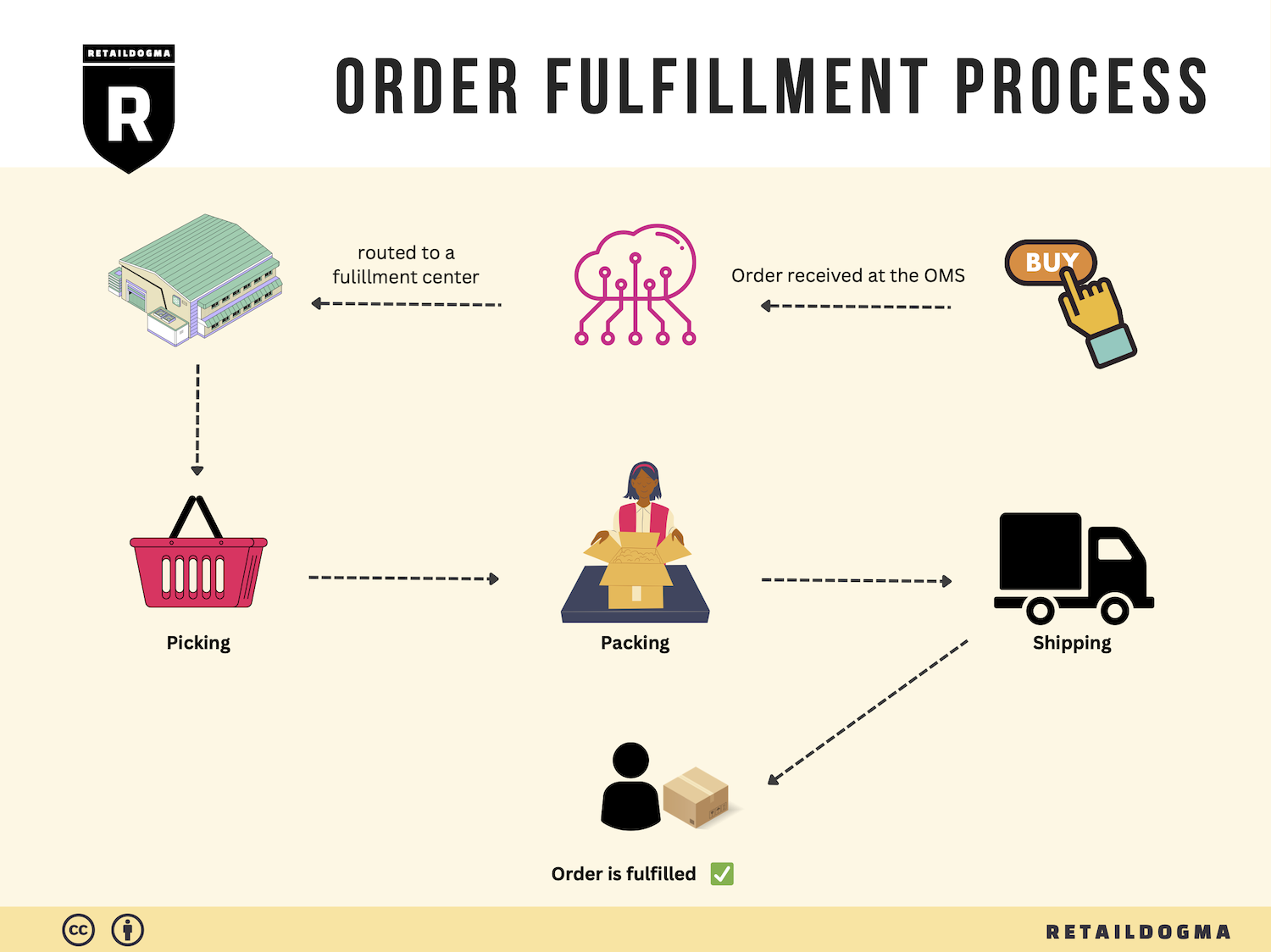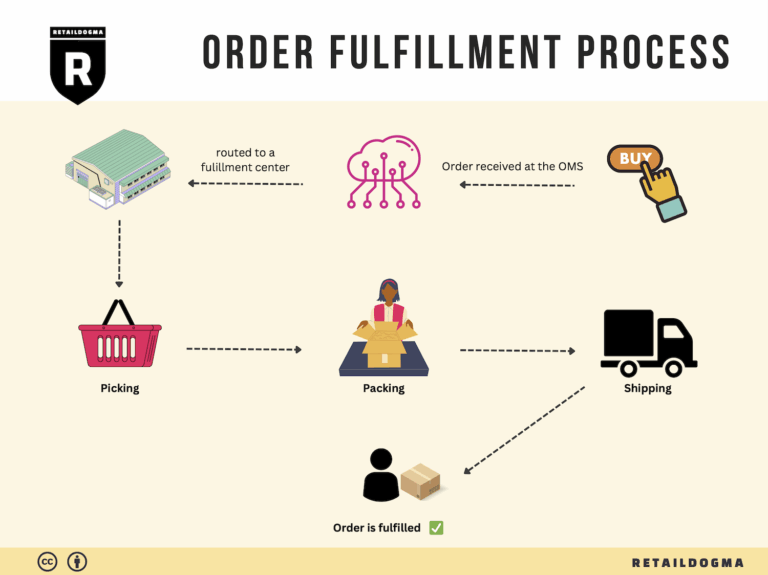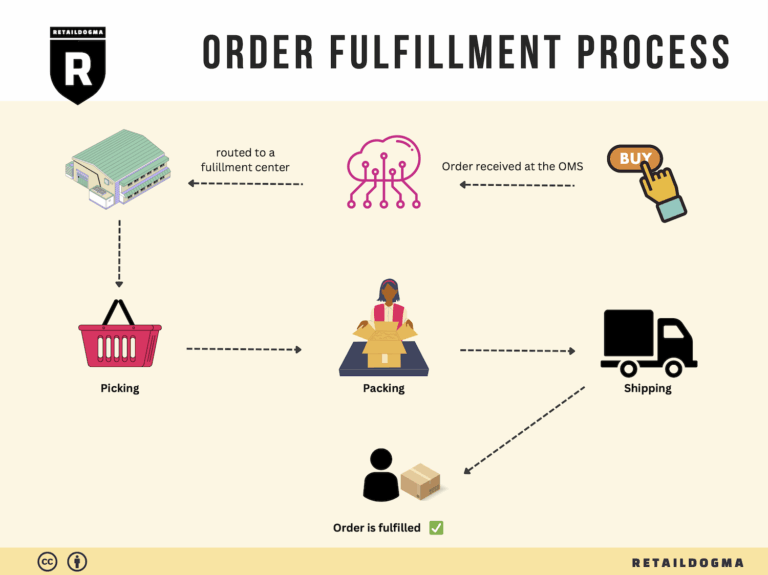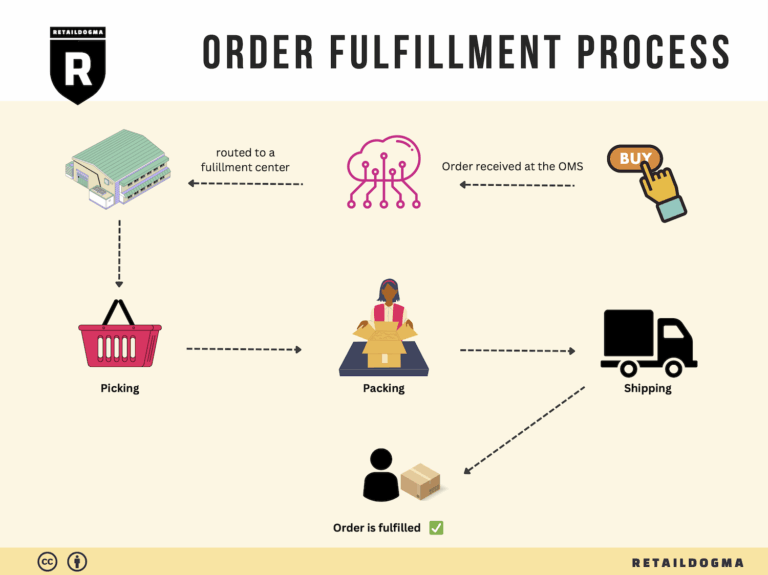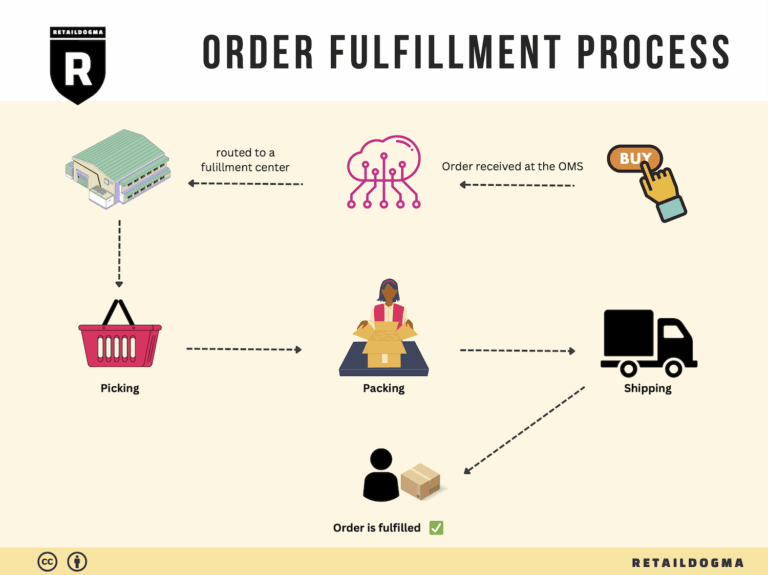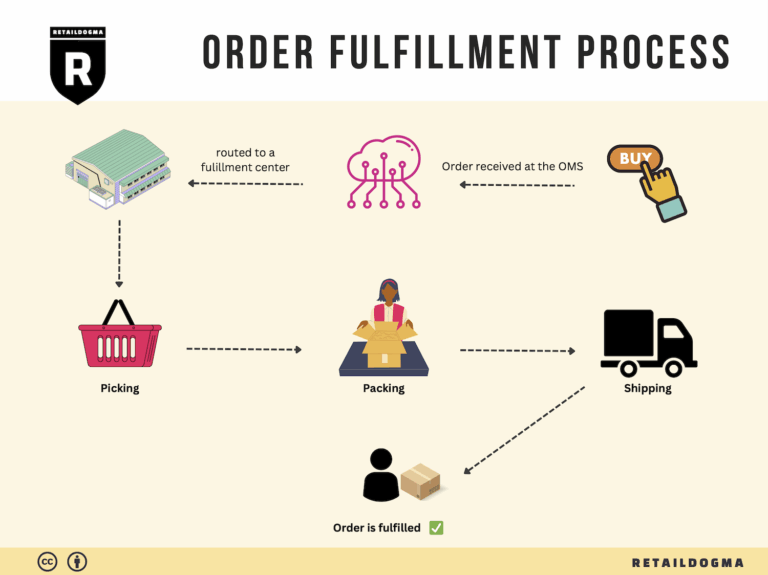How Order Fulfillment Works: A Step-by-Step Guide for Businesses
What is E-commerce Fulfillment? An Introduction for Growing Businesses
Understanding the E-commerce Fulfillment Process
For many growing online businesses, the excitement of increasing sales often comes hand-in-hand with the daunting challenge of managing order fulfillment. As orders begin to stack up, the task of packing and shipping can quickly become overwhelming. This is where e-commerce fulfillment comes into play, serving as a critical component in delivering products to customers efficiently and effectively.
E-commerce fulfillment is simply the process of getting a product from your inventory to your customer’s doorstep. This encompasses everything from picking and packing orders to shipping and handling returns. For businesses looking to scale, mastering this process is essential not only for maintaining customer satisfaction but also for ensuring healthy profit margins.
This guide aims to demystify e-commerce fulfillment for business owners and operations managers by covering several key aspects:
-
Fulfillment Models: We’ll explore various fulfillment models, including Third-Party Logistics (3PL) and Fulfillment by Amazon (FBA), helping you understand which option aligns best with your business needs. Each model has its advantages and potential drawbacks, and knowing these can empower you to make informed decisions.
-
Core Services: We’ll delve into the essential services that fulfillment partners typically offer, including inventory management, order processing, shipping options, and return handling. Understanding these services can help you identify what you truly need from a fulfillment partner.
-
Choosing the Right Partner: Selecting a fulfillment partner is a pivotal decision for your business. We will discuss the criteria to consider, such as accuracy rates, shipping capabilities, customer service, and technology integration. A well-chosen partner can significantly enhance your operational efficiency and customer experience.
-
Pricing Structures: Finally, we will break down common pricing models used in e-commerce fulfillment. Understanding the costs involved—such as storage fees, shipping rates, and additional services—will allow you to budget effectively and ensure your fulfillment strategy supports your financial goals.

The ultimate goal of this guide is to empower your business with the knowledge needed to make smart, strategic decisions about your logistics. With the right fulfillment strategy, you can streamline operations, enhance customer satisfaction, and drive growth without the headaches that often accompany order management. Let’s navigate the world of e-commerce fulfillment together and set the stage for your business’s success.
What You’ll Learn In This Guide
- What is E-commerce Fulfillment? An Introduction for Growing Businesses
- The Order Fulfillment Process: From ‘Buy’ Button to Customer’s Door
- Comparing Fulfillment Models: In-House vs. 3PL vs. Dropshipping
- A Deep Dive into Amazon FBA: Pros, Cons, and Who It’s For
- Core Services Offered by Fulfillment Centers
- How to Choose a Fulfillment Partner: A 6-Point Checklist
- Understanding Fulfillment Pricing: A Breakdown of Common Fees
- Frequently Asked Questions (FAQs) about Fulfillment
- Conclusion: Is Outsourcing Fulfillment the Right Move for Your Business?
- Important Disclaimer
The Order Fulfillment Process: From ‘Buy’ Button to Customer’s Door
1. Receiving Inventory
The first step in the order fulfillment process is receiving inventory. This involves the acceptance of products from suppliers or manufacturers into the fulfillment center. Upon arrival, each shipment is inspected for accuracy and quality against purchase orders. Key terms associated with this stage include SKU (Stock Keeping Unit), which helps in tracking inventory items uniquely.
Importance: Efficient inventory receiving is crucial as it sets the foundation for the entire fulfillment process. Accurate checks prevent discrepancies that could lead to stockouts or delays in order processing. Maintaining a robust receiving process ensures that inventory levels are accurate, contributing to improved cash flow and better customer satisfaction.
2. Warehouse Storage
Once inventory is received and verified, it is stored in designated areas within the warehouse. Effective warehouse storage involves organizing products in a manner that facilitates easy access and efficient picking. Utilizing bin locations and pallet racking systems helps streamline this process, ensuring that items are stored according to their demand frequency.
Importance: Proper storage solutions are vital for optimizing space and minimizing retrieval times. By strategically placing high-demand items closer to the packing area, businesses can significantly enhance operational efficiency. This step is also essential for managing inventory levels and ensuring that stock is rotated appropriately, thereby reducing the risk of obsolescence.
3. Order Picking
Order picking is the process of retrieving items from storage to fulfill customer orders. A pick list, which is a document generated from the order details, guides warehouse staff in selecting the correct products. This step can be performed using various methods, including single order picking, batch picking, or wave picking.
Importance: Efficient order picking is critical for meeting customer expectations regarding delivery times. The speed and accuracy of this process directly impact overall order fulfillment efficiency. By employing technology such as barcode scanners or pick-to-light systems, businesses can reduce picking errors and enhance productivity, ultimately leading to higher customer satisfaction.

4. Order Packing
After items are picked, they move to the packing station where they are prepared for shipment. This step includes verifying the picked items against the order, packaging them appropriately, and labeling each package for shipping. Key considerations during this stage include using the right packing materials and ensuring that packaging meets carrier requirements.
Importance: Order packing is essential for protecting items during transit and ensuring that they arrive in excellent condition. Properly packed orders reduce the likelihood of returns due to damage and can enhance the overall customer experience. Moreover, incorporating a packing slip that details the contents of the shipment helps customers verify their orders upon receipt.
5. Shipping & Delivery
The final step in the fulfillment process is shipping and delivery. Once packages are packed and labeled, they are handed over to shipping carriers for delivery. Businesses often utilize a shipping management system to select the best carrier based on cost, speed, and service level. Tracking information is typically provided to customers to keep them informed about their order status.
Importance: Timely shipping is paramount in today’s e-commerce environment where customers expect quick delivery. The choice of carrier and shipping method can significantly affect costs and delivery times. By optimizing shipping routes and utilizing multiple carriers, businesses can enhance their delivery performance while keeping shipping costs manageable. This step is critical for maintaining customer trust and loyalty.
Conclusion
Understanding and optimizing each step of the order fulfillment process is vital for e-commerce businesses looking to scale. By focusing on accuracy, efficiency, and customer satisfaction throughout the fulfillment journey—from receiving inventory to shipping and delivery—businesses can enhance their operational effectiveness and drive growth. Implementing best practices in each of these steps will not only improve fulfillment performance but also contribute to a positive customer experience.
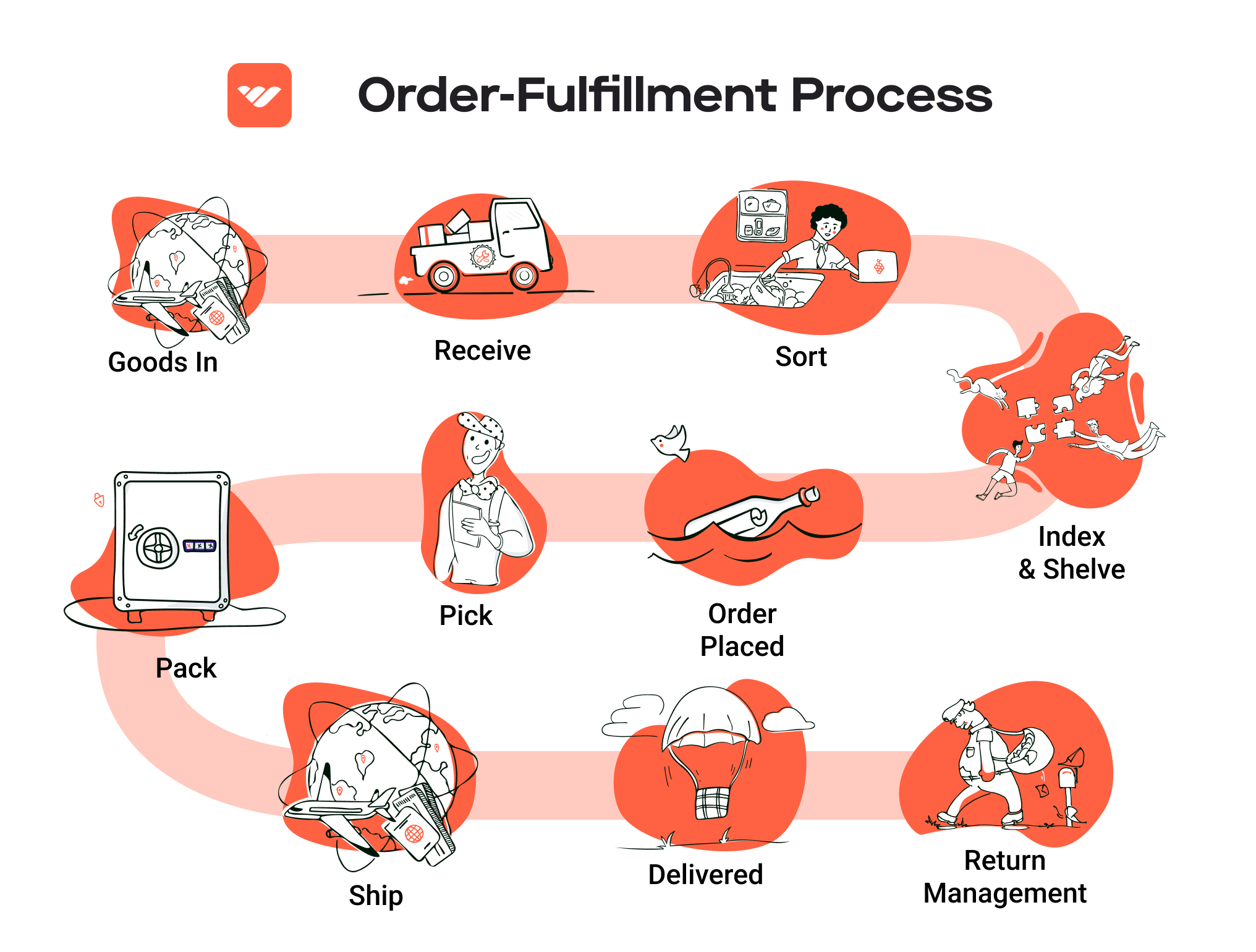
Comparing Fulfillment Models: In-House vs. 3PL vs. Dropshipping
Comparing Fulfillment Models
When considering the best fulfillment model for your e-commerce business, understanding the differences between In-House Fulfillment, Third-Party Logistics (3PL), and Dropshipping is crucial. Each model has its own set of advantages and disadvantages, making it important to align your choice with your business goals, operational capacity, and customer expectations. Below is a comparative analysis of these three fulfillment strategies.
| Model | Who Handles Inventory | Best For (Business Stage) | Key Advantage | Key Disadvantage |
|---|---|---|---|---|
| In-House Fulfillment | Your Business | Established businesses with stable demand | Full control over inventory and fulfillment processes | High overhead costs and labor requirements |
| Third-Party Logistics (3PL) | 3PL Provider | Growing businesses needing scalability | Cost-effective, efficient logistics solutions | Less control over inventory management and quality |
| Dropshipping | Supplier | Startups and small businesses with low overhead | No inventory costs and minimal risk | Lower profit margins and potential quality control issues |
In-House Fulfillment
In-House Fulfillment is when a business manages its own inventory and order processing. This model is ideal for established e-commerce businesses with consistent demand and the capacity to handle logistics internally. The key advantage of in-house fulfillment is that it provides complete control over the entire process—from inventory management to shipping. This control allows businesses to tailor their fulfillment operations to meet specific customer needs, ensuring a personalized experience. However, the primary disadvantage is the high overhead costs associated with warehousing, staffing, and maintaining logistics operations. As businesses scale, these costs can significantly impact profitability and may require a reevaluation of the fulfillment strategy.
Third-Party Logistics (3PL)
Third-Party Logistics (3PL) involves outsourcing fulfillment operations to a specialized logistics provider. This model is particularly beneficial for growing businesses that need to scale quickly without the burden of managing logistics themselves. A notable advantage of using a 3PL provider is the cost-effectiveness of their services, which can include warehousing, inventory management, and shipping at competitive rates. Providers like Dollar Fulfillment, for instance, offer transparent pricing and fast shipping capabilities, reaching 99% of the U.S. population within 48 hours. However, the downside of using a 3PL is the potential loss of control over inventory management and quality assurance. Businesses must carefully select their logistics partner to ensure alignment with their quality standards and customer service expectations.
Dropshipping
Dropshipping is a fulfillment model where the retailer does not hold inventory but instead relies on suppliers to ship products directly to customers. This model is ideal for startups and small businesses that want to minimize overhead costs and risks associated with inventory management. The primary advantage of dropshipping is that it allows entrepreneurs to start selling products without the need for significant upfront investment in inventory. However, dropshipping comes with its challenges, including lower profit margins due to reliance on suppliers, potential shipping delays, and issues with product quality. As businesses scale, they may find it difficult to maintain consistent quality and customer satisfaction if they do not have direct control over the fulfillment process.
Conclusion
Choosing the right fulfillment model is essential for scaling your e-commerce operations effectively. Each model—In-House Fulfillment, Third-Party Logistics, and Dropshipping—offers unique benefits and challenges. Businesses must assess their current needs, growth trajectory, and customer expectations to determine the best approach. Whether you opt for the control of in-house fulfillment, the efficiency of a 3PL provider, or the low-risk strategy of dropshipping, aligning your fulfillment strategy with your overall business goals will be crucial for long-term success.
A Deep Dive into Amazon FBA: Pros, Cons, and Who It’s For
Understanding Fulfillment by Amazon (FBA)
Fulfillment by Amazon (FBA) is a service that allows sellers to store their products in Amazon’s fulfillment centers. Amazon takes care of storage, packaging, shipping, and customer service for these products, enabling sellers to focus on growing their business. By leveraging Amazon’s extensive logistics network, sellers can reach millions of customers worldwide while benefiting from Amazon’s trusted brand.
When a customer orders a product, Amazon handles the entire fulfillment process—from picking the item from storage to packing it and shipping it directly to the customer. This service not only simplifies logistics for sellers but also offers them access to Amazon’s customer base, including millions of Amazon Prime members who enjoy fast, free shipping on eligible products.
How FBA Works
-
Setting Up: Sellers create an Amazon seller account and enroll in FBA. They then list their products on Amazon, specifying that they will use FBA.
-
Inventory Shipment: Sellers prepare their products and ship them to Amazon’s fulfillment centers. Amazon provides specific guidelines on how to package and label the items.
-
Storage: Once received, products are stored in Amazon’s warehouses. Amazon manages the inventory levels and informs sellers about stock availability.
-
Order Fulfillment: When a customer places an order, Amazon picks, packs, and ships the item. Amazon also handles customer service inquiries and returns.
-
Payment: After the order is fulfilled, Amazon disburses payments to the sellers, deducting applicable fees for the FBA service.
Pros of Using FBA
1. Prime Eligibility
One of the most significant advantages of FBA is that it qualifies products for Amazon Prime. Prime members are more likely to purchase items that offer free two-day shipping, which can significantly increase sales potential.
2. Customer Trust
Products fulfilled by Amazon come with a level of trust and credibility that many consumers prefer. The backing of Amazon’s customer service and return policies can enhance customer confidence in purchasing from FBA sellers.
3. Multi-Channel Fulfillment
FBA isn’t limited to Amazon sales. Sellers can use FBA to fulfill orders from other sales channels, such as their own websites or other marketplaces. This flexibility allows for a streamlined logistics process across various platforms.
4. Time Savings
Outsourcing logistics to Amazon allows sellers to focus on other critical aspects of their business, such as marketing and product development. Amazon’s expertise in fulfillment can lead to more efficient operations.
5. Scalable Solution
FBA provides a scalable solution for growing businesses. As sales increase, sellers can easily expand their inventory without the need for additional warehousing or logistics management.
Cons of Using FBA
1. High Fees
FBA comes with various fees, including storage fees for inventory held in Amazon warehouses and fulfillment fees for each order processed. These costs can add up quickly, particularly for sellers with low-margin products.
2. Strict Inventory Rules
Amazon has stringent policies regarding inventory management, including limits on how much inventory can be sent to fulfillment centers. This can pose challenges for sellers who need more flexibility in managing stock levels.
3. Commingling Risks
FBA may commingle inventory from different sellers, meaning that when a seller’s product is sold, it may be shipped from another seller’s stock. This can lead to issues with product quality and brand integrity, as sellers cannot guarantee that their products are being shipped.
4. Loss of Control
By using FBA, sellers relinquish a degree of control over their fulfillment process. Issues such as shipping errors or delays are handled by Amazon, which can be frustrating for sellers who prefer to manage their customer service directly.
5. Complicated Returns
While Amazon handles returns, the process can sometimes be cumbersome for sellers. Returned items may not be in sellable condition, leading to potential losses that can be difficult to manage.
Who is FBA Best For?
FBA is particularly beneficial for small to medium-sized businesses looking to scale their operations without the overhead of managing their own logistics. It is ideal for:
-
E-commerce Entrepreneurs: Those starting their online business can leverage FBA to access Amazon’s vast customer base while minimizing logistics complexity.
-
Brands with High Demand: Businesses that experience seasonal spikes or fluctuating demand can benefit from FBA’s scalability without the need for significant investment in warehousing.
-
Sellers with Low-SKU Products: Sellers offering a limited range of products can efficiently manage their inventory with Amazon, making it easier to maintain stock levels and maximize sales.
-
Multi-Channel Retailers: Businesses selling on multiple platforms can streamline their operations by using FBA for order fulfillment across various channels.
While FBA offers numerous advantages, it is essential for sellers to carefully consider their business model and operational needs to determine if it is the right fit. By weighing the pros and cons, e-commerce business owners can make informed decisions about utilizing Amazon’s fulfillment services to support their growth objectives.
Core Services Offered by Fulfillment Centers
Inventory Management & Warehousing
Effective inventory management and warehousing are foundational services provided by fulfillment centers. This involves the systematic tracking of inventory levels, orders, sales, and deliveries. Fulfillment centers utilize advanced inventory management software to maintain real-time visibility of stock levels, enabling businesses to make informed decisions about restocking and product availability.
Benefits for E-commerce Businesses:
1. Enhanced Cash Flow Management: By providing daily updates on inventory levels, fulfillment centers help businesses maintain optimal stock levels, which is crucial for managing cash flow effectively. This reduces the risk of overstocking or stockouts, both of which can negatively impact revenue.
-
Space Optimization: Outsourcing warehousing to fulfillment centers allows e-commerce businesses to save on overhead costs associated with maintaining their own storage facilities. This is particularly beneficial for startups and small businesses looking to scale without significant capital investment.
-
Scalability: As a business grows, fulfillment centers can easily accommodate increased inventory needs. This means businesses can scale their operations without the logistical headaches of expanding warehouse space.
Pick and Pack Services
Pick and pack services are a critical component of order fulfillment. This process involves selecting (picking) the correct items from the warehouse and packaging (packing) them for shipment to customers. Fulfillment centers employ trained staff and sophisticated systems to ensure accuracy and efficiency in this process.
Benefits for E-commerce Businesses:
1. High Accuracy Rates: Fulfillment centers typically boast impressive accuracy rates (often above 99%), significantly reducing the chances of shipping errors that can lead to customer dissatisfaction and increased return rates.
-
Time Efficiency: With dedicated teams focused on picking and packing, e-commerce businesses can benefit from faster order processing times. This efficiency is especially important for businesses that rely on quick turnaround times to meet customer expectations.
-
Custom Packaging Options: Many fulfillment centers offer customizable packing solutions, which can enhance branding and improve the unboxing experience for customers. This attention to detail can foster brand loyalty and encourage repeat purchases.
Kitting and Assembly
Kitting and assembly refer to the process of bundling multiple products together into a single package or preparing items for sale in a specific configuration. This service is particularly valuable for businesses that sell products that are often purchased together or require assembly before they can be sold.
Benefits for E-commerce Businesses:
1. Increased Sales Opportunities: By offering bundled products, businesses can create attractive packages that appeal to customers, often leading to increased average order values. Kitting can also simplify the buying process for customers, encouraging them to choose bundled items over individual products.
-
Reduced Handling Costs: By outsourcing kitting and assembly to fulfillment centers, businesses can streamline their operations and minimize handling costs. This allows internal teams to focus on core business activities such as marketing and customer service.
-
Quality Control: Fulfillment centers employ quality control measures during the kitting process, ensuring that all components of a kit are present and meet quality standards before shipment. This reduces the risk of returns and enhances customer satisfaction.
Returns Management (Reverse Logistics)
Returns management, also known as reverse logistics, is the process of handling product returns efficiently and effectively. Fulfillment centers facilitate this process by providing streamlined return procedures, which can include inspecting returned items, restocking them, or managing refunds.
Benefits for E-commerce Businesses:
1. Improved Customer Experience: A well-managed return process can significantly enhance customer satisfaction. When customers know they can return items easily, they are more likely to make purchases, knowing their investment is protected.
-
Cost Reduction: Fulfillment centers can help businesses manage returns more cost-effectively by streamlining the return process, reducing the time and resources spent on handling returns. This can lead to lower operational costs and improved profitability.
-
Data Insights: By analyzing return trends and reasons, fulfillment centers can provide valuable insights that help businesses identify product issues or customer dissatisfaction. This information can be instrumental in making product improvements or adjusting marketing strategies.
In conclusion, partnering with a fulfillment center offers e-commerce businesses a wide array of core services that not only streamline operations but also enhance overall customer satisfaction. By leveraging these services, businesses can focus on growth and scaling their operations while ensuring that logistics and fulfillment remain efficient and cost-effective.
How to Choose a Fulfillment Partner: A 6-Point Checklist
Location & Warehouse Network
Importance: The geographical location of your fulfillment partner’s warehouses is crucial for ensuring timely delivery to your customers. A well-distributed network minimizes shipping times and costs, which directly impacts customer satisfaction and your bottom line.
Questions to Ask:
1. Where are your fulfillment centers located?
2. How do these locations align with my primary customer base?
3. What is the average shipping time to major regions?
4. Can you provide same-day or next-day shipping options?
5. How do you handle international shipping?
Technology & Integrations
Importance: In today’s e-commerce landscape, seamless technology integration is essential for efficient operations. Your fulfillment partner should be able to integrate with your existing e-commerce platforms and provide real-time tracking and inventory management.
Questions to Ask:
1. What e-commerce platforms do you integrate with (e.g., Shopify, WooCommerce, Amazon)?
2. How long does it take to integrate your system with mine?
3. Do you offer a real-time inventory management system?
4. Can I access detailed analytics regarding my orders and inventory?
5. How do you handle system outages or technological issues?
Specializations (e.g., cold storage, oversized items)
Importance: Depending on your product offerings, you may require a fulfillment partner with specific capabilities. This could include cold storage for perishables, handling oversized items, or specialized packaging needs. Choosing a partner with the right specialization can prevent complications and ensure compliance with industry regulations.
Questions to Ask:
1. Do you have specialized facilities for my product type (e.g., temperature control, fragile items)?
2. What experience do you have in fulfilling similar products?
3. How do you handle quality control for specialized items?
4. What packaging options do you offer for unique products?
5. Are there additional costs associated with specialized services?
Scalability & Capacity
Importance: As your business grows, your fulfillment needs will change. A good partner should have the capacity to scale with your business, accommodating seasonal fluctuations or rapid growth without compromising service quality.
Questions to Ask:
1. How do you manage peak seasons or unexpected surges in order volume?
2. What is your current capacity, and how do you plan to expand?
3. Can you provide examples of how you have scaled with other clients?
4. How do you ensure that quality is maintained during high-volume periods?
5. Are there limits on the number of SKUs or orders you can handle?
Pricing and Contracts
Importance: Understanding the pricing structure and contract terms is vital to ensuring that your fulfillment costs remain manageable. Look for transparency in pricing and flexibility in contracts to avoid unexpected fees.
Questions to Ask:
1. What is included in your pricing model (e.g., picking, packing, shipping)?
2. Are there any hidden fees (e.g., for returns, storage, or packaging)?
3. What are the terms of your contract? Is there a minimum commitment period?
4. How do you handle pricing for international shipping?
5. Can you provide a detailed breakdown of costs?
Customer Support & Reviews
Importance: Exceptional customer support is a hallmark of a reliable fulfillment partner. Your partner should be easily accessible and responsive to your needs, as well as able to provide assistance when issues arise. Additionally, reviews and testimonials can give insight into their track record.
Questions to Ask:
1. What customer support channels do you offer (e.g., phone, email, chat)?
2. What are your average response times for customer inquiries?
3. Can you provide references or case studies from current clients?
4. How do you handle disputes or issues with order fulfillment?
5. What training do your customer service representatives receive?
Conclusion
Choosing the right fulfillment partner is a critical decision for any e-commerce business looking to scale. By using this 6-point checklist, you can systematically evaluate potential partners to ensure they meet your operational needs and contribute positively to your customer experience. Remember, a successful partnership can significantly enhance your business’s efficiency, customer satisfaction, and ultimately, your bottom line. Take the time to conduct thorough research and ask the right questions to find a fulfillment partner that aligns with your business goals.
Understanding Fulfillment Pricing: A Breakdown of Common Fees
Initial Setup Fees
When partnering with a fulfillment service, the initial setup fee is often the first cost you’ll encounter. This fee typically covers the onboarding process, which includes integrating your e-commerce platform with the fulfillment center’s systems, setting up inventory management, and configuring shipping protocols. The amount can vary widely depending on the complexity of your requirements and the fulfillment provider’s capabilities.
Calculation: Setup fees may be a flat rate or vary based on the number of SKUs you have. For instance, if your business has a large number of products, expect a higher fee due to the increased complexity of setup. Additionally, some providers may waive these fees if you commit to a long-term contract.
Receiving Fees
Receiving fees are charged when your inventory arrives at the fulfillment center. This fee accounts for the labor and resources used to unload, inspect, and stock your products. It ensures that your goods are handled properly and stored correctly within the warehouse.
Calculation: This fee is generally calculated per pallet or per item received. For example, if you send a shipment of 50 pallets, you might pay a receiving fee for each pallet, which can range from $15 to $30 depending on the provider. If you frequently receive large shipments, it may be beneficial to negotiate a bulk rate.
Storage Fees (per pallet/bin)
Storage fees are incurred for the space your inventory occupies within the warehouse. These fees can be charged on a monthly basis and are typically calculated per pallet or per bin, depending on how your products are organized.
Calculation: The storage fee can vary significantly based on location and the type of goods stored. For instance, standard storage fees might be around $10 to $25 per pallet per month. However, if your inventory has specific storage requirements (e.g., temperature control), expect higher fees. It’s essential to monitor your inventory turnover to avoid unnecessary storage costs, as long-term storage can accumulate quickly.
Pick & Pack Fees (per item/order)
Pick and pack fees cover the labor involved in selecting items from storage and preparing them for shipment. This includes picking the products, packing them appropriately, and labeling them for shipping.
Calculation: Fees are usually charged per item or per order, and can range from $0.50 to $2.00 per item, depending on the complexity of the pick and pack process. For example, if an order consists of three different items, you might pay a pick fee for each item plus a pack fee. Consider negotiating these fees based on your order volume, as higher volumes often yield lower rates.
Shipping Fees
Shipping fees are one of the most variable costs associated with fulfillment services. These fees cover the transportation of your products to customers and can be influenced by several factors, including package weight, dimensions, destination, and shipping speed.
Calculation: Shipping fees are usually determined by carrier rates, which can fluctuate based on current fuel prices, demand, and service level (ground, expedited, etc.). Many fulfillment centers offer discounted shipping rates due to their volume, which can help lower your overall costs. It’s advisable to ask for a breakdown of these fees to understand how they are calculated and explore options for optimizing shipping costs.
Tips for Getting an Accurate Quote
-
Be Transparent: Provide potential fulfillment partners with comprehensive details about your business, including the types of products you sell, your expected order volume, and any specific requirements (e.g., kitting, temperature control).
-
Request Itemized Quotes: Always ask for a detailed breakdown of all potential fees. This transparency will help you avoid hidden charges and understand what you are paying for.
-
Negotiate Terms: Don’t hesitate to negotiate fees based on your expected volume and the length of your contract. Fulfillment providers may offer discounts for long-term commitments or larger order volumes.
-
Evaluate Service Levels: Consider the service level you require. Higher levels of service, such as same-day shipping or specialized handling, may come with additional costs but can also enhance customer satisfaction.
-
Review Regularly: As your business scales, periodically reassess your fulfillment costs and service levels to ensure they align with your growth and changing needs.
By understanding these common fees and how they are calculated, you can make informed decisions that will help you choose the right fulfillment partner for your e-commerce business.
Frequently Asked Questions (FAQs) about Fulfillment
1. What is dollar fulfillment?
Dollar fulfillment refers to a specialized fulfillment service that focuses on providing affordable, efficient, and high-quality logistics solutions, particularly for high-volume, low-SKU, direct-to-consumer brands. It emphasizes cost-effective shipping and operations without compromising service quality, enabling businesses to maximize their profit margins.
2. How does dollar fulfillment differ from traditional fulfillment services?
Dollar fulfillment differentiates itself through its focus on value and efficiency. It offers transparent pricing with no hidden fees, a high accuracy rate of 99.8%, and the ability to reach 99% of the U.S. population within 48 hours. In contrast, traditional fulfillment services may not provide the same level of cost-effectiveness or specialized care for specific business types.
3. What is a 3PL (Third-Party Logistics)?
A 3PL, or third-party logistics provider, is a company that offers outsourced logistics services, including warehousing, fulfillment, and transportation. Businesses partner with 3PLs to manage their supply chain operations, allowing them to focus on core activities like product development and marketing while leveraging the expertise and resources of the logistics provider.
4. How much do fulfillment services cost?
The cost of fulfillment services varies depending on factors such as order volume, complexity, storage requirements, and specific services needed (e.g., kitting, returns processing). Dollar fulfillment positions itself as a cost-effective option by offering transparent pricing with no hidden fees, enabling businesses to better manage their logistics expenses.
5. What is the difference between a warehouse and a fulfillment center?
A warehouse is primarily used for storing goods, while a fulfillment center focuses on the complete process of receiving, storing, picking, packing, and shipping products directly to customers. Fulfillment centers are designed to handle order processing and distribution efficiently, often utilizing advanced technology to streamline operations.
6. How does dollar fulfillment ensure accuracy in order fulfillment?
Dollar fulfillment achieves a 99.8% accuracy rate through a combination of advanced technology, streamlined processes, and dedicated personnel. Each order is carefully managed, with real-time inventory updates and direct access to packers for personalized service, ensuring that every detail is attended to.
7. Can dollar fulfillment integrate with my eCommerce platform?
Yes, dollar fulfillment offers seamless integration with nearly all major eCommerce platforms via API. This integration can typically be completed in less than two minutes, allowing businesses to connect their online stores with the fulfillment service quickly and efficiently.
8. What kind of customer support does dollar fulfillment provide?
Dollar fulfillment prides itself on its exceptional customer support, offering direct access to dedicated packers during business hours. This white-glove service ensures that businesses receive personalized assistance and prompt responses to any inquiries or issues that may arise.
9. How does dollar fulfillment handle returns?
Dollar fulfillment provides comprehensive return processing services, allowing businesses to manage returns efficiently and minimize disruptions to their operations. This service helps maintain customer satisfaction by ensuring that returns are handled smoothly and in a timely manner.
10. What should I consider when choosing a fulfillment partner?
When selecting a fulfillment partner, consider factors such as pricing transparency, service quality, accuracy rates, shipping capabilities, and customer support. It’s essential to choose a provider that aligns with your business model and can scale with your growth, ensuring that your logistics operations remain efficient and cost-effective as you expand.
Conclusion: Is Outsourcing Fulfillment the Right Move for Your Business?
Evaluating the Benefits of Outsourcing Fulfillment
Outsourcing your fulfillment process can be a transformative decision for your e-commerce business. By partnering with a dedicated fulfillment service, you can save significant time and resources, allowing you to focus on what truly matters—growing your business. A reliable partner can streamline your shipping processes, providing you with efficient order management and reducing the logistical burdens that come with handling fulfillment in-house.
One of the most compelling benefits of outsourcing is scalability. As your business grows, so do your shipping demands. A fulfillment partner like Dollar Fulfillment offers the infrastructure to handle increased volumes without compromising on service quality. Their technology and strategic warehouse placements ensure that your products reach 99% of the U.S. population within 48 hours, enabling you to scale operations seamlessly.
Moreover, leveraging the expertise of a third-party logistics provider can enhance the customer experience. With a 99.8% accuracy rate in order fulfillment, you can be confident that your customers will receive their orders correctly and on time, which fosters loyalty and repeat business. The transparency in pricing and absence of hidden fees further ensures that your operational costs remain manageable.
Choosing the right fulfillment partner is crucial for your growth trajectory. It’s not just about finding a low-cost solution; it’s about aligning with a provider that understands your unique needs and can adapt as your business evolves.
Next Steps: Audit Your Current Fulfillment Process
To determine if outsourcing fulfillment is the right move for your business, start by auditing your current shipping process. Evaluate your operational efficiency, costs, and customer satisfaction levels. Consider whether a partnership with a fulfillment service could enhance your overall strategy and drive growth. Take the first step today—your business deserves the best in logistics support.
Important Disclaimer
⚠️ Important Disclaimer
The information in this guide is for educational purposes. Fulfillment services, pricing, and platform features change frequently. Always conduct your own due diligence and consult with providers directly before making business decisions.
